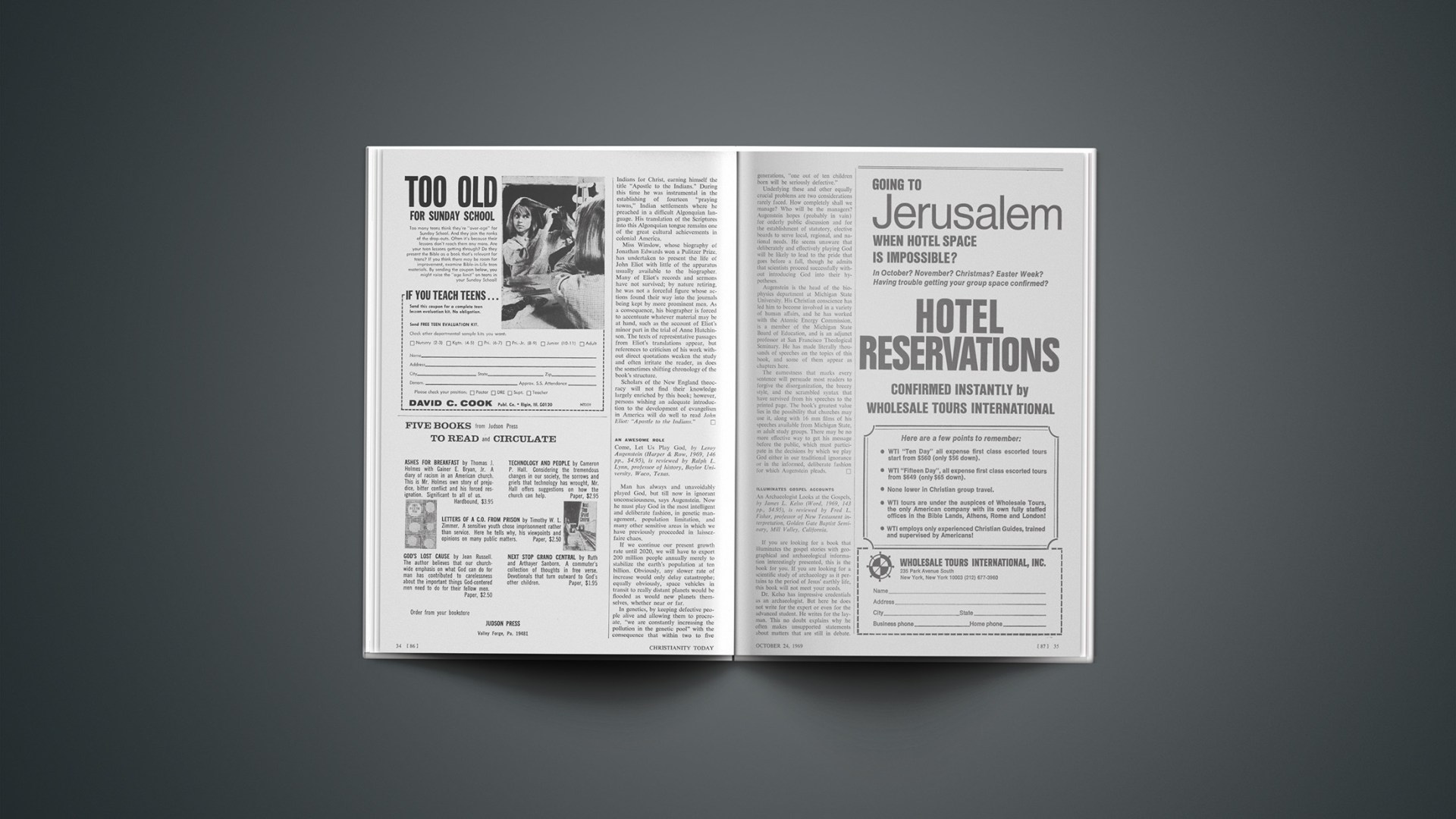The return of spirits of the dead to their earthly haunts used to threaten the living who believed that the onset of winter, with its capacity for hardship and death, accompanied the unfriendly ghosts. In early November those ancient people put cakes and bread on graves, hoping that in return the spirits would grant them a gentle winter.
Christianity altered that soul-food tradition. No longer haunted by ghosts, living Christians honored dead saints with a saintly act: the food once used to bribe the dead they gave to the poor to help keep them alive.
The practice of honoring the dead continues, if not always with repasts for the disadvantaged, at least with remembrances of deeds well done. Yet the ascription of saintliness to the living has become a rare accolade indeed. One New Testament saint addressed several letters to people very much alive and called them saints, although those first-century Christians had shortcomings not unlike those of their twentieth-century descendants. The failure of most people to recognize contemporary sainthood reflects the hodgepodge of saintly and unsaintly elements throughout humanity. In the crush of depravity, commendable acts often go unnoticed. Perhaps on this All Saints’ Day heed should be taken of saints alive as well as dead.










